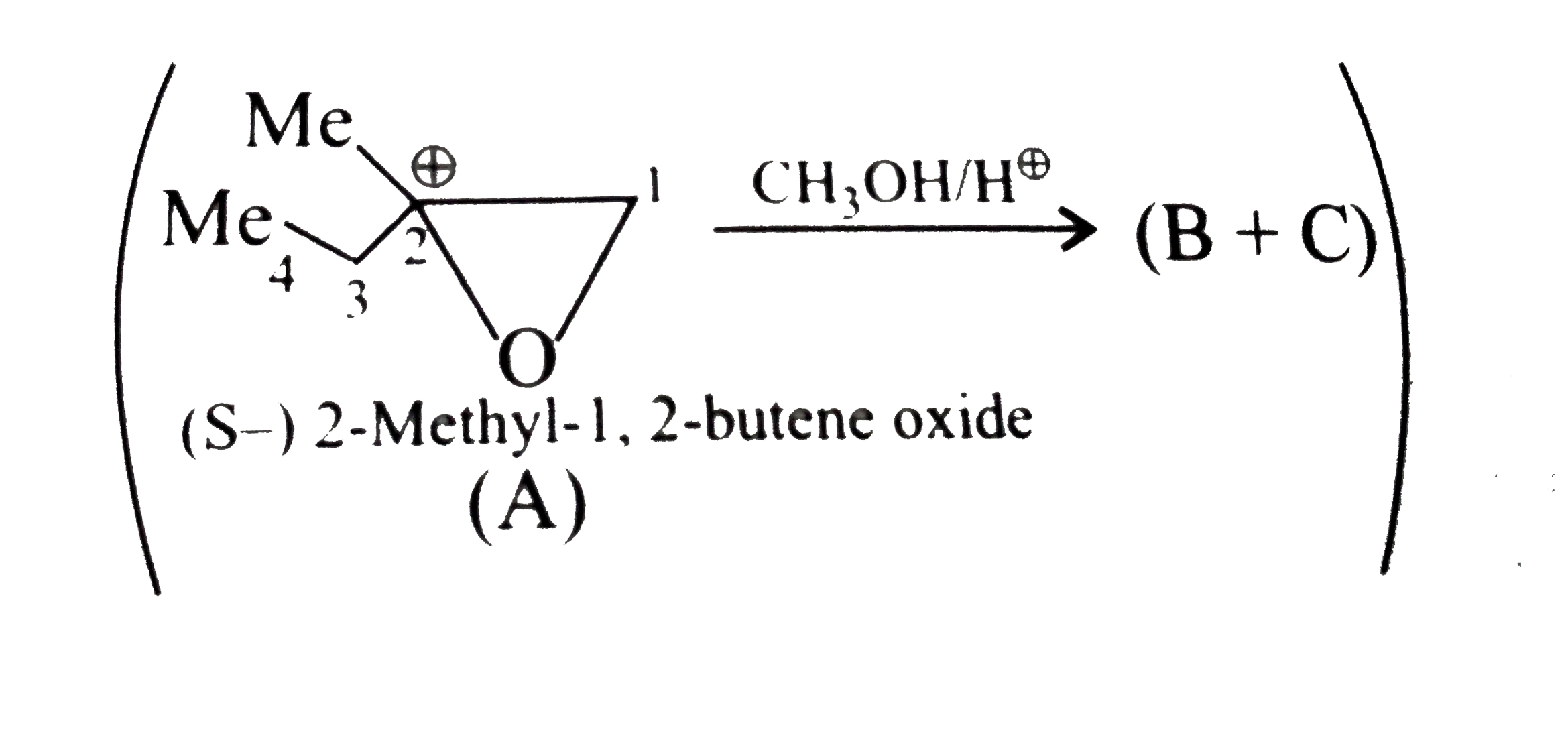Explain how the stereochemistry of SN1 and SN2 differs.
Step-by-Step Solution:
1. Understanding SN1 Reaction:
- The SN1 reaction is a unimolecular nucleophilic substitution reaction. The rate of this reaction depends only on the concentration of the substrate and not on the nucleophile. This means that the reaction follows first-order kinetics.
- In SN1, a carbocation intermediate is formed after the leaving group departs. This carbocation can be attacked by the nucleophile from either side (front or back).
2. Stereochemistry of SN1:
- When the nucleophile attacks the carbocation, it can do so from either the front or the back.
- If the nucleophile attacks from the front, the configuration of the product remains the same as the original substrate (retention of configuration).
- If the nucleophile attacks from the back, the configuration is inverted.
- Since both attack orientations are possible, the result is a racemic mixture of products (equal amounts of both configurations).
3. Understanding SN2 Reaction:
- The SN2 reaction is a bimolecular nucleophilic substitution reaction. The rate of this reaction depends on both the substrate and the nucleophile, following second-order kinetics.
- In SN2, there is no formation of a stable carbocation; instead, a transition state is formed where the nucleophile is simultaneously bonding to the substrate while the leaving group is departing.
4. Stereochemistry of SN2:
- In the SN2 mechanism, the nucleophile approaches the substrate from the side opposite to the leaving group (backside attack).
- This backside attack leads to a complete inversion of configuration at the carbon atom (known as Walden inversion).
- Therefore, the product formed in an SN2 reaction is always inverted compared to the original substrate.
5. Comparison of Stereochemistry:
- In summary, the stereochemistry of SN1 results in a racemic mixture due to the possibility of attack from either side of the planar carbocation, while SN2 results in a single inverted product due to the backside attack mechanism.
- The SN1 reaction is a unimolecular nucleophilic substitution reaction. The rate of this reaction depends only on the concentration of the substrate and not on the nucleophile. This means that the reaction follows first-order kinetics.
- In SN1, a carbocation intermediate is formed after the leaving group departs. This carbocation can be attacked by the nucleophile from either side (front or back).
- When the nucleophile attacks the carbocation, it can do so from either the front or the back.
- If the nucleophile attacks from the front, the configuration of the product remains the same as the original substrate (retention of configuration).
- If the nucleophile attacks from the back, the configuration is inverted.
- Since both attack orientations are possible, the result is a racemic mixture of products (equal amounts of both configurations).
- The SN2 reaction is a bimolecular nucleophilic substitution reaction. The rate of this reaction depends on both the substrate and the nucleophile, following second-order kinetics.
- In SN2, there is no formation of a stable carbocation; instead, a transition state is formed where the nucleophile is simultaneously bonding to the substrate while the leaving group is departing.
- In the SN2 mechanism, the nucleophile approaches the substrate from the side opposite to the leaving group (backside attack).
- This backside attack leads to a complete inversion of configuration at the carbon atom (known as Walden inversion).
- Therefore, the product formed in an SN2 reaction is always inverted compared to the original substrate.
- In summary, the stereochemistry of SN1 results in a racemic mixture due to the possibility of attack from either side of the planar carbocation, while SN2 results in a single inverted product due to the backside attack mechanism.
Topper's Solved these Questions
- ORGANIC REACTION MECHANISMBOOK - CENGAGE CHEMISTRY ENGLISHCHAPTER - ORGANIC REACTION MECHANISMEXERCISE - Subjective
19 Videos
- ORGANIC REACTION MECHANISMBOOK - CENGAGE CHEMISTRY ENGLISHCHAPTER - ORGANIC REACTION MECHANISMEXERCISE - Comprehension
35 Videos
- ORGANIC REACTION MECHANISMBOOK - CENGAGE CHEMISTRY ENGLISHCHAPTER - ORGANIC REACTION MECHANISMEXERCISE - Analytical and Descriptive
6 Videos
- NCERT BASED EXERCISEBOOK - CENGAGE CHEMISTRY ENGLISHCHAPTER - NCERT BASED EXERCISEEXERCISE - Chemical Equilibrium
73 Videos
- P-BLOCK GROUP 13 - BORON FAMILYBOOK - CENGAGE CHEMISTRY ENGLISHCHAPTER - P-BLOCK GROUP 13 - BORON FAMILYEXERCISE - Exercise Archives (Subjecive)
9 Videos
Similar Questions
Predicrt the order of reactivity of the following compounds in SN1 and SN2 reactions.

View SolutionGive an ore of Sn and Pb
View SolutionGive the order of SN−1 of SN−1 and SN2 displacement of halogen CH3X,1∘X,2∘X,3∘X.
View SolutionThe first steps of SN1 and SN2 recatiosns are, respectively
View SolutionExplain the formation B and C, optically pure different isomers form (A) via SN1

View SolutionAmong the given halides, which will give same product in both SN1 and SN2 reactions(excluding stereoisomers)?



View SolutionWhich alkyl chloride shows highest probability of SN1 mechanism?
View SolutionWhich of the following halides will be most reactive in SN2 reaction and SN1 reaction respectively?

View SolutionIf Sn denotes the sum of n terms of an A.P. whose common difference is d and first term is a, find Sn−2Sn−1+Sn−2
View SolutionThe most reactive towards SN1 is:
View Solution